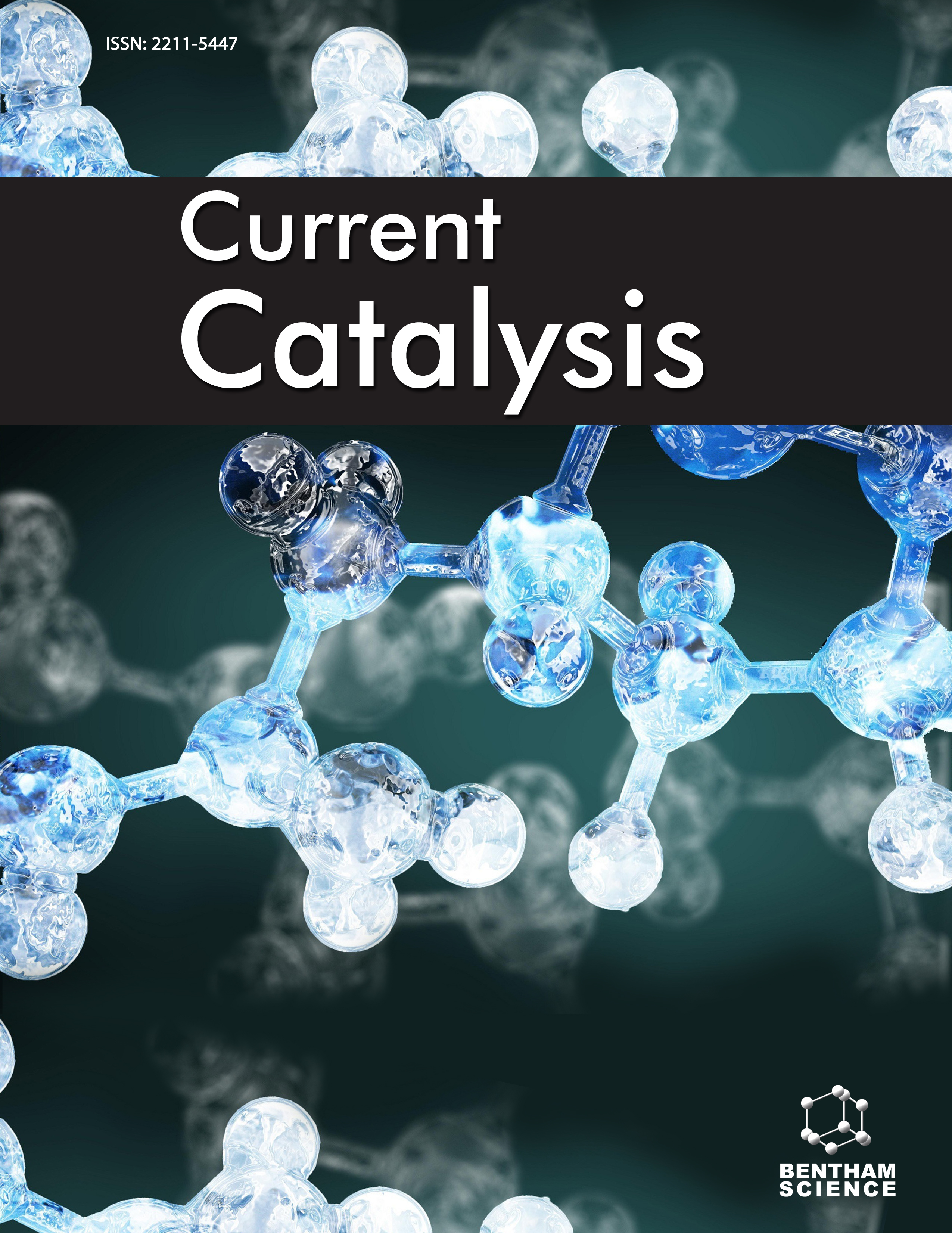- Home
- A-Z Publications
- Current Catalysis
- Previous Issues
- Volume 5, Issue 1, 2016
Current Catalysis - Volume 5, Issue 1, 2016
Volume 5, Issue 1, 2016
-
-
Synthesis of Pyrazole by Using Polyvinylsulfonic Acid (PVSA) as a Novel Bronsted Acid Catalyst
More LessAuthors: Sunil S. Ekbote, Sandip T. Gadge and Bhalchandra M. BhanageBackground: Pyrazoles are useful intermediates in pharmaceutical, agrochemical, photographic and other fields. Pyrazole nucleus has been reported to possess a wide spectrum of biological properties such as anti-inflammatory, anti-depressant, anti-bacterial, anti-tumor, anti-microbial, anti-viral, anti-fungal and anti-filarial agent. The aims of this paper to introduce readers the polyvinylsulfonic acid (PVSA) as a new cataly Read More
-
-
-
PEG Assisted Manganese (II) Carbonate as an Efficient Catalyst for Regioselective Nitration of Aromatic Compounds Under Acid Free Conventional and Non-Conventional Conditions Using NaNO2
More LessBackground: Nitration of aromatic and hetero aromatic compounds has received enormous attention for the past several decades because many of these nitro products are used as chemical feed stocks and important intermediates for the synthesis of several lifesaving drugs, dyes, pharmaceuticals, perfumes, plastics and explosives. The classical nitration method demands the use of acid mixture (a potent mixture o Read More
-
-
-
Enantioselective Hetero-Diels-Alder Reaction of Aromatic Aldehydes Catalyzed by ((R)-1,1´-Bi-2-naphthoxy)titanium Dichloride: Experimental and Theoretical Results
More LessAuthors: Nidhi Sogani, R. K. Bansal and Pragya SinhaBackground: The hetero-Diels-Alder (HDA) reaction of the carbonyl compounds with conjugated dienes, sometimes referred to as oxa-DA reaction, is an important method for the preparation of dihydropyrans, which are useful starting materials for the synthesis of several natural products including carbohydrates. However, carbonyl group as such is a less reactive dienophile and usually requires the use of a catalyst to enha Read More
-
-
-
New Poly(Acrylic Acid)-Based Functional Nanogels as Supports of Lipase: Evaluation of Hydrolytic Activity of the Immobilized Lipase
More LessAuthors: Dharela R. and Ghanshyam S. ChauhanBackground: Lipases are excellent biocatalysts with dual ability of hydrolysis as well as esterification with high efficiency and substrate specificity. However, in the pristine form they have inherent limitations such as lack of reusability and limited thermal and pH stability those restrict their uses in commercial applications. These limitations can be overcome by their immobilization on the suitable supports. Methods: In the present Read More
-
-
-
Kinetic Study for the Synthesis of 1-nitro-4-(prop-2-ynyloxy) benzene in Solid-Liquid PTC Condition
More LessAuthors: Pachaiyappan Abimannan and Venugopal RajendranBackground: Currently, phase transfer catalysis is an experimental technique which is environmentally benign technique have become immensely popular in promoting various reactions. Methods: The reaction between 4-nitrophenol and propargyl bromide was carried out in a solid-liquid biphasic phase transfer catalytic system using potassium carbonate as base at 40°C. Results: Trace amount of water is introduced to the Read More
-
-
-
Preparation and Characterization of a Heterogeneous Catalyst from Water Hyacinth (Eichhornia crassipes): Catalytic Application in the Synthesis of bis(indolyl)methanes and bis(pyrrolyl) methanes Under Solvent Free Condition
More LessAuthors: Anjumani Talukdar and Dibakar Chandra DekaBackground: Heterogeneous catalysts are the leading areas of research interest mainly due to the facilities of recovery and reusability. Water hyacinth (Eichhornia crassipes) is a renewable aquatic plant and is considered a hazard for other useful aquatic crops. In the search of a sustainable and eco-friendly process, a novel heterogeneous catalyst has been prepared from this plant for the use in the synthesis of bi Read More
-
-
-
Yttrium Containing Dimeric and Tetrameric Keggin Type Phosphotungstates: Syntheses, Crystal Structure and Catalytic Activity for Alcohol Oxidation Using H2O2 as an Oxidant in Water
More LessAuthors: Firasat Hussain, Mukesh K. Saini, Rakesh Gupta and Surendra SinghBackground: The aim of this paper is to introduce about the synthetic strategy of new polyoxometalate compounds using single step reaction procedure and their oxidative catalytic activity. In this context herein, we report green oxidation process for the oxidation of alcohols to carbonyl compounds, using yttrium containing dimeric K11[Y(PW11O39)2]·35H2O (1) and tetrameric K16Na6[(PY2W10O38)4 (W3O8)(OH)4(H2O) Read More
-
Most Read This Month
Article
content/journals/ccat
Journal
10
5
false
en


